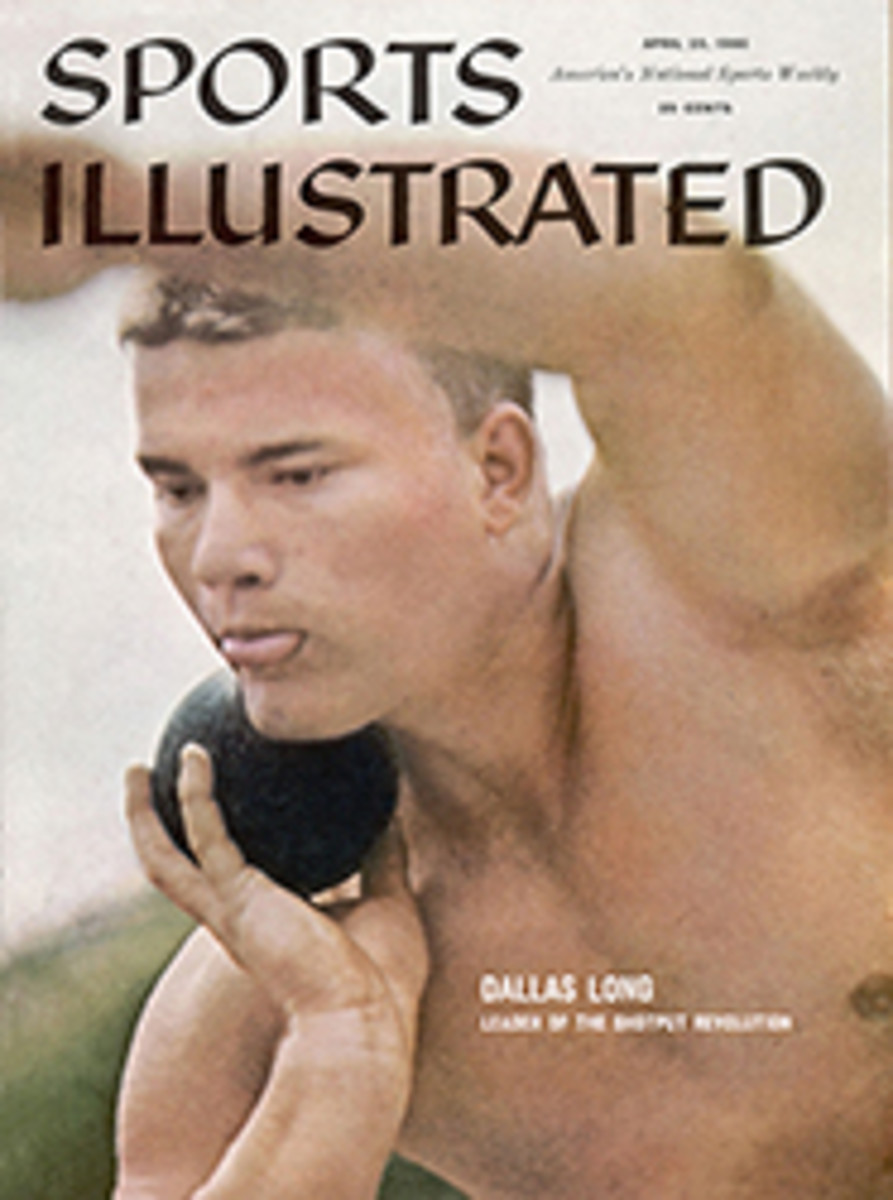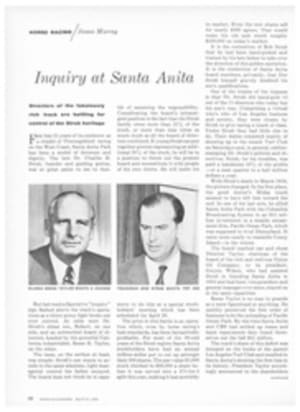
The Winners Of Our 1960 Elections
In the 1960 elections for SPORTS ILLUSTRATED's annual Design Awards the votes are in and the ballots counted, and the winners are Jack and Helen Lazar of Kimberly Knitwear for the Sporting Look award, and Anne Fogarty for the Designer of the Year award. The electorate, as in the past, was a panel of 600 fashion authorities using a ballot drawn up by representatives of 12 of the nation's finest stores.
The platform that won for the Lazars was built around the little knitted suit and their mastery of it over a dozen years. In electing the Lazars the panel has voted in behalf of the American traveling public and in recognition of enthusiasts who favor Kimberly knits for everything from an afternoon of bridge to an afternoon at the races.
Anne Fogarty piled up her votes in one year, during which she has stamped her personality on sportswear that is as much to be spectated at as to spectate or perform in (see her swimsuit for dry land on next page). Anne Fogarty says, "I feel that the greatest contribution I have made to sportswear is that of femininity."
The Lazars, whose award, rather like the Nobel Prize, reflects accomplishments over the span of a decade or more, have been in business together since 1947, shortly after Jack finished World War II service in the Philippines with the Army's combat engineers. He saw a future for clothes that could keep pace with a public free to travel with foreseeable ease around the world. Their first knit-dress designs were wool chenilles, the fuzzy-surfaced, form-fitting type of dresses that, as Jack recalls, "made every man on the street turn around and watch." Women were attracted in steadily growing numbers, too—so much so that when LIFE did a fashion report of the impact of the sack in America it found 24 members of a ladies' club in Kentucky wearing one particular Lazar style.
The firm followed sacks with trapezes until, disillusioned with the quick rise and fall of Paris silhouettes, they turned to the development of color and pattern as a more solid basis for fashion interest.-This is their format today. They concentrate on wearable silhouettes which change subtly from season to season. The Lazars vary them with new colors and patterns, such as Argyle and hound's-tooth checks, which were introduced last fall and are part of the summer collection (see below).
The Lazars feel that their greatest contribution has been in developing new patterns on knitting machines that are so intricate that one correction requires two weeks for repatterning an entire machine. They are proud of having developed a year-round demand for wool knits and are selling summer wools for the first time.
Their firm is also recognized for pioneering with different fibers in their search for a travel costume which will never wrinkle or sag. They were the first to work with Orion filament and the first to learn how to dye the yarn satisfactorily. They combined linen and rayon for a knit with a natural string look; they also experimented with silk knits in 1957.
The Lazars, parents of three children, commute to their New York workrooms from West Englewood, New Jersey in a Mercedes 300 SL, which Jack drives.
Anne Fogarty admits that she is a completely subjective designer and makes clothes that she likes to wear herself. She believes that a successful wife, for example, should "dress for everything," and the approach to any situation is, in the mind of this designer, consolidated first of all by deciding what to wear. For doing housework Mrs. Fogarty believes in wearing coveralls; so she designs coveralls that are made like a garage mechanic's but are embroidered with pink and red carnations. For entertaining at home she wears strictly tailored pants and shirt, but in gold lamé (see page 35). Fogarty denims have candy-color stripes, and most shorts and pants have lace edging.
Well known for her petticoated dresses, which whirled her to fame and the Fashion Critics' Award in 1951, the Neiman-Marcus Award in 1952 and numerous citations since. Designer Fogarty has been toiling on New York's Seventh Avenue since 1940, first as a model and, for the past 11 years, as a designer. In 1957 she signed a contract with Saks Fifth Avenue to design exclusively for their stores in 14 cities. (The same clothes are available in other cities at other fine stores.) Saks, in turn, licenses manufacturers and vendors of Fogarty designs, ranging from dresses, coats, suits, lingerie, hats, shoes and jewelry to sportswear. The sportswear is manufactured by Sports Editions and includes pants, shirts, skirts, coveralls, jackets and swimsuits.
The Fogarty approach to swim-wear has been based solidly and successfully on appearance. Saks sold 800 white lace bikinis last summer from the first Fogarty collection, at $30 a suit. This summer there will be many more bikinis from the same mold: in black lace with an organdy cover-up, in lace-trimmed gingham checks and in faded leopard print, none of which are intended to look their best in the water.
At-home wear for the hostess is a Fogarty forte and has been successful particularly during the Christmas holiday season. This, too, reflects the Fogarty way of life, which centers around a New York apartment and her husband, Thomas Jr. (a painter), and two children. In the summers the Fogartys repair to the beach at East Hampton for weekends and summer vacation.
The winners of the SIDAs will be honored first in Dallas and Houston, where Neiman-Marcus and SPORTS ILLUSTRATED will co-sponsor a musical fashion show featuring designs from this year's 18 nominees. There will be two shows in Dallas on April 28: a luncheon at the Salesmanship Club and a dinner at Brook Hollow Country Club to celebrate the opening of their new ballroom. In Houston on April 30 the program will be the feature of the Junior League's annual Spring Ball in the Emerald Room of the Shamrock Hotel. On May 31 the show will come into New York to be presented for 350 prominent members of the fashion industry at a formal dinner at the St. Regis, and the awards, sculptured dressmaker's dummies crowned with laurel wreaths, will be presented.
Members of the SIDA committee who drew up this year's ballot of nominees are Melvin Dawley, Lord & Taylor; Hector Escobosa, I. Magnin; Adam Gimbel, Saks Fifth Avenue; Andrew Goodman, Bergdorf Goodman; H.D. Hodgkinson, Filene's; Albert D. Hutzler Jr., Hutzler's; Arthur Madison, Julius Garfinckel; Lawrence Marcus, Neiman-Marcus; Herbert L. Seegal, Macy's; Walter E. Simmons, J. L. Hudson; Peter J. Stelling, J. P. Allen; William Clark Stetson, Marshall Field; and Fred R. Smith, SPORTS ILLUSTRATED. Previous winners of the Sporting Look Award are: Claire McCardell, 1956; Sydney Wragge, 1957; Bonnie Cashin and Rose Marie Reid, both in 1958; the Davidows, 1959. Previous winners of The Designer of the Year Award are: Rudi Gernreich in 1956; Bill Atkinson, 1957; Jeanne Campbell, 1958; and John Weitz, 1959.
PHOTO
LOUISE DAHL-WOLFE
DESIGNER OF THE YEAR FOGARTY SCORED WITH FRILLY SPORTSWEAR
PHOTO
LOUISE DAHL-WOLFE
HELEN AND JACK LAZAR WON SPORTING LOOK AWARD FOR THEIR KNITS
PHOTO
LOUISE DAHL-WOLFE
FOGARTY BIKINI STRESSES FEMININITY
PHOTO
LOUISE DAHL-WOLFE
LAZAR SUITS FIT BRIDGE OR BELMONT
THE SIDA NOMINEES
Eighteen sportswear designers were nominated for this year's SIDA awards. For the second year in a row-designers from abroad were among those honored; for the first time a ski-wear-designing team was recognized for creative contributions to a rapidly growing specialized field. Nominated for Designer of the Year were Elisabeth Beck, the German, ski-wear designers Maria and Willy Bogner, Ellen Brooke, Anne Fogarty, Mike Geist, Julie Isles, Helene Maddock, Ricci, Frank Smith and Pembroke Squires. Nominees for the Sporting Look award were Bill Atkinson, Olga di Gresy of Italy, Mary K. Dodson, Rudi Gernreich, the Lazars, Tina Leser, Vera Maxwell and Italy's Emilio Pucci.

